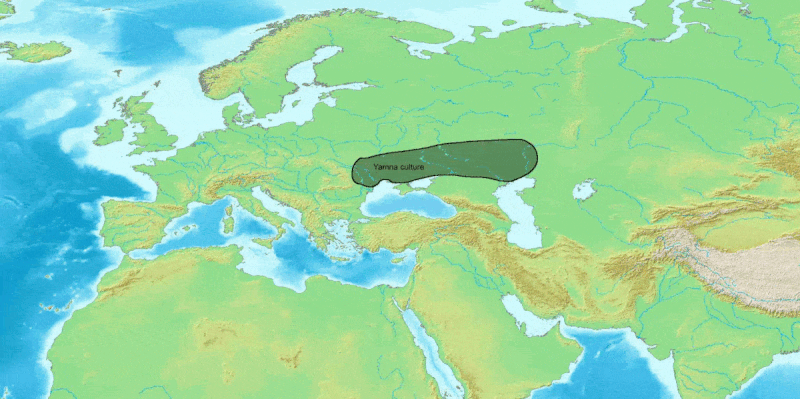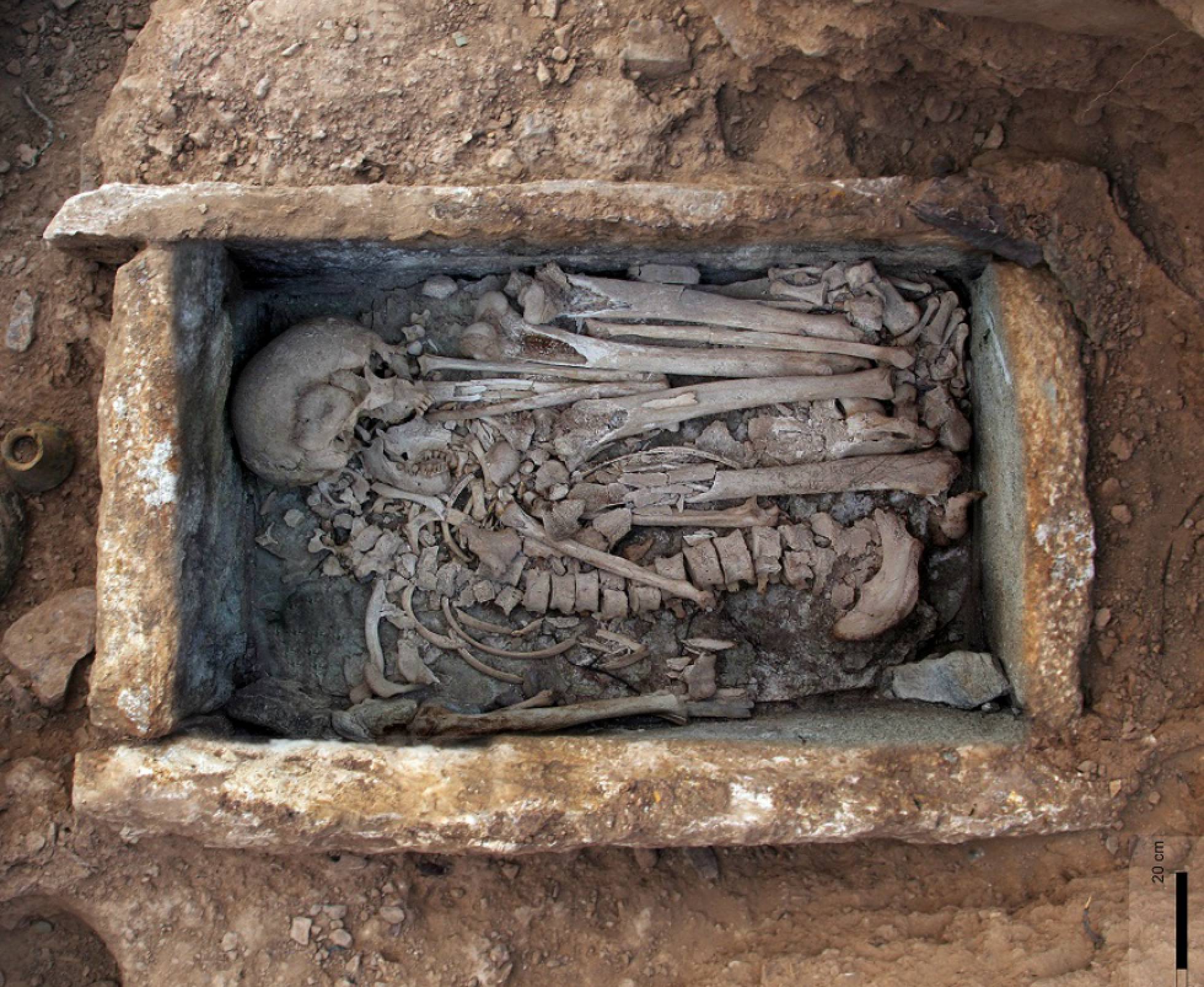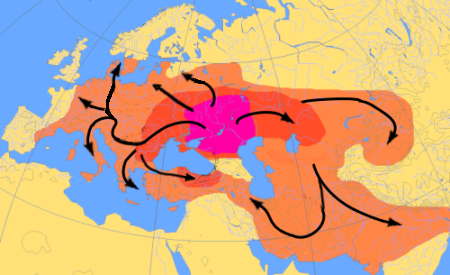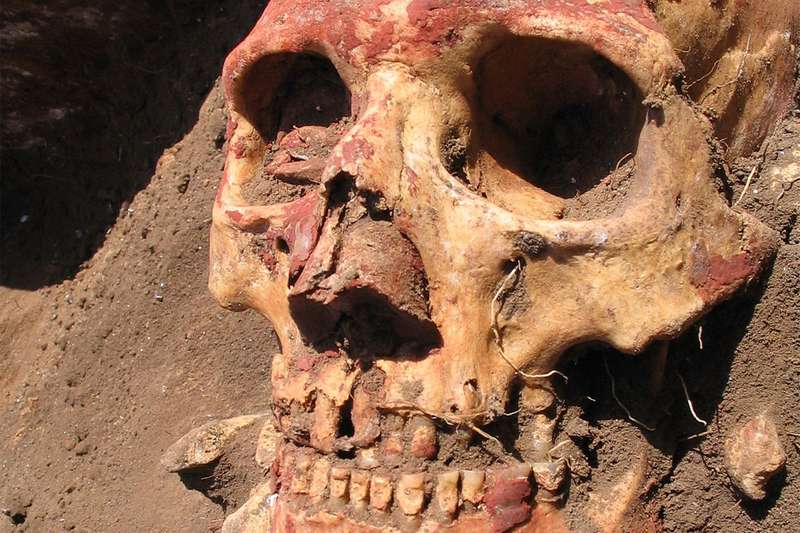The impact of the Indoeuropean invasion of Europe proves to have been critically underestimated, according to latest archeogenetic research in Spain & Portugal – the remotest destination for the Proto-Indoeuropean Yamnaya People from their previous homelands in the steppes of Eastern Europe, north of Caucasus range.
“The archaeology reveals a hierarchical society that broke with the old egalitarianism of the early Neolithic period” Historian ROBERTO RISCH
Ἡ ἀνατρεπτικὴ συμβολὴ καὶ ἡ δυναμικὴ τῶν πατριαρχικῶν, φωτολατρικῶν, πολεμικῶν, ἱεραρχικῶν Ἰνδοευρωπαϊκῶν φύλων εἰς τὴν προϊστορικὴν Εὐρώπην ἔχει προφανῶς ὑποτιμηθῆ ἕως τώρα, ἀποκαλύπτει νεωτάτη ἀρχαιογενετικὴ ἔρευνα: Οἱ μὲν (προάριοι) ἄρρενες ἐξωλοθρεύθησαν πλήρως (100% τοῦ Υ χρωμοσώματος ἀμέσως προήρχετο ἐκ τῶ εἰσβολέων!), τὸ δὲ γενικὸν ποσοστὸν γονιδίων (πλὴν τοῦ Υ τῶν ἀνδρῶν) ἐκ τῶν ΙΕ (Yamnaya) ἀνήρχετο εἰς 40%!
More than 5,000 years ago a nomadic group of shepherds rode out of the steppes of eastern Europe to conquer the rest of the continent. The group, today known as the Yamna or Pit Grave culture, brought with them an innovative new technology, wheeled carts, which enabled them to quickly occupy new lands. More than 4,500 years ago, the descendants of these people reached the Iberian peninsula and wiped out the local men, according to new research by a team of international scientists.
“The collision of these two populations was not friendly; instead, the men who arrived almost completely pushed out the local men,” explains David Reich, a genetics professor at Harvard University who presented the results of the research at an event organized by New Scientist magazine on September 22, ahead of the study’s publication.”
 Given that children inherit the Y chromosome from their fathers, “this means that the men who arrived had preferential access to local women, again and again,” said Reich at the September event.
Given that children inherit the Y chromosome from their fathers, “this means that the men who arrived had preferential access to local women, again and again,” said Reich at the September event.The study, which analyzed the DNA of the remains of 153 individuals dug up in the Iberian peninsula, is set to be published in one of the most important scientific journals in the world. Neither Reich or Olade, who are both from Harvard University, wanted to offer any more details. The geneticist Carles Lalueza-Fox, from the Barcelona Institute of Evolutionary Biology, also worked on the research.
 Three years ago, another research team led by Reich suggested that Indo-European languages – the linguistic family to which most European languages belong – developed via the Yamna culture and their descendants.
Three years ago, another research team led by Reich suggested that Indo-European languages – the linguistic family to which most European languages belong – developed via the Yamna culture and their descendants.The prehistorian Roberto Risch, from the Autonomous University of Barcelona, told EL PAÍS at the time that findings from the La Bastida dig, in the Spanish southeastern region of Murcia, had uncovered “a great surprise.”
“We realized that the Iberian peninsula was not only colonized by the first Neolithic migration wave 8,000 or 9,000 years ago but also by a later one 4,500 years ago, which brought with it a very different culture,” he said.
 War axes and carts with four wheels can be found in the layers of earth that date back 4,500 years. “From then on, almost all men’s tombs were filled with weaponry, adornments, displays of wealth. The archaeology reveals marked signs of a hierarchical society that broke with the old egalitarianism of the early Neolithic period,” said Risch.
War axes and carts with four wheels can be found in the layers of earth that date back 4,500 years. “From then on, almost all men’s tombs were filled with weaponry, adornments, displays of wealth. The archaeology reveals marked signs of a hierarchical society that broke with the old egalitarianism of the early Neolithic period,” said Risch.The findings from Reich’s research team are also backed up by a study published last year by geneticists Dan Bradley from Trinity College in Dublin and Rui Martiniano from Cambridge University. This research team announced they had discovered a “discontinuity” in the Y chromosome during the Bronze Age in the Iberian Peninsula, after studying the DNA of the remains of 14 people found in archaeological sites in Portugal.
“In terms of why the Y chromosome was replaced, we could speculate that the populations from the steppes had superior technology, better weapons and also domesticated horses that could have given them an advantage in war,” says Martiniano.
References:
See also:

